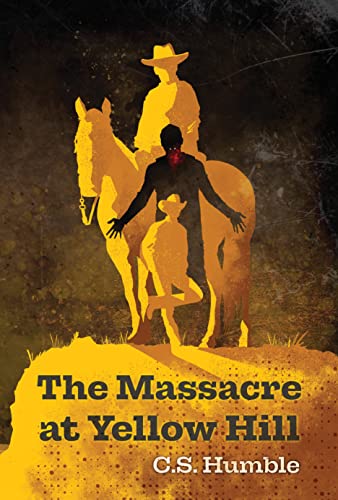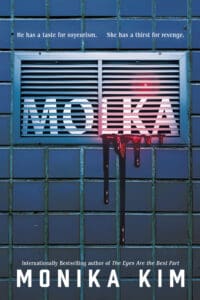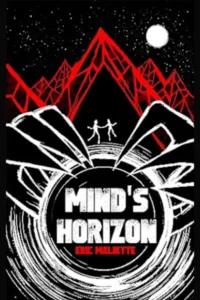A woman mourns after the death of her husband in the mines at Yellow Hill, Texas. She wonders how she will feed her children.
A freed slave wanders the Texas planes with his adopted son, a teenager with a colorful family history.
Either of these might be the set up for a John Ford western, or—given the blood spilled—a Sam Peckinpah epic. But what neither Ford nor Peckinpah had were vampires, secret cults, or blood rituals that open gates to other dimensions.
They didn’t know what they were missing.

The Massacre at Yellow Hill brings these two groups together, as the Widow Tabitha Miller learns that her husband’s death was no accident but the result of some beast that lurks in the mines. Gilbert Ptolemy has a name for that beast. It’s a vampire, and he and his son, Carson, hunt vampires and other supernatural beasts. What follows is an action packed adventure as our heroes attempt to stop the mine’s owner from opening a gate and releasing one of the Six, ancient gods who will transform or destroy the world.

The second book in the series, A Red Winter in the West picks up three years later. The Miller remaining Miller family has found their feet in Abilene, Texas, living and working in the very close orbit of Judge Ellison. But the supernatural world is not done with them. Judge Ellison is a key member of an organization designed to stop the Society of Prometheus, a secret society bent on completing the work begun at Yellow Hill.
Things in Abilene barely begin before they reach a bloody end, as a vampire bent on revenge makes a housecall, and soon Annie Miller is traveling on her own, seeking out any allies she can in the fight against the vampires. Meeting those allies, she finds herself drawn into a different fight altogether, and soon they are all on their way to Chicago, to make a desperate attempt at stopping the Society of Prometheus.
Carson Ptolomy, meanwhile, is having his own troubles. After the death of his adopted father, he’s gone rogue, picking off every member of the Society of Prometheus he can find. But his luck runs out on a Chicago-bound train, and once again, the book’s disparate threads draw together for a final cosmic battle.
In the That Light Sublime books, Humble creates his characters with brilliant efficiency, giving them wants and needs, and then tearing those things away from them, and you can’t help rooting for them. As often as beloved characters die in these books, Humble always has a fresh batch of colorful, and colorfully drawn characters to step into the gap, and Annie’s rag-tag group of gunfighters and occult warriors are deserving of a book of their own.
The novels so successfully create a world in which there are vampires, werewolves, and interdimensional beings of incalculable scale, that it feels as if it has somehow always been there, waiting to be discovered. And Humble peppers the books with little world-building details, such as a globe-spanning Gunfighters Guild, in such a way that the world feels larger than what is immediately before us.
While Humble writes action with bloody precision, he also takes care to find the quiet moments that show character. And he is, like those John Ford westerns or the novels of Stephen King, willing to risk sentimentality. This is no criticism. In fact, it’s a particular strength. In these books full of death and brutality, the deaths matter. Lives are transformed and broken by violence, but these characters struggle on.
In both books, the reader might be excused for feeling as if the vampire storylines are continually being supplanted by that of a larger cosmic horror, but it seems very likely that all of these threads will come together in the final installment, The Light of a Black Star, due in November of 2023. This reader will be waiting patiently.





Leave a Reply